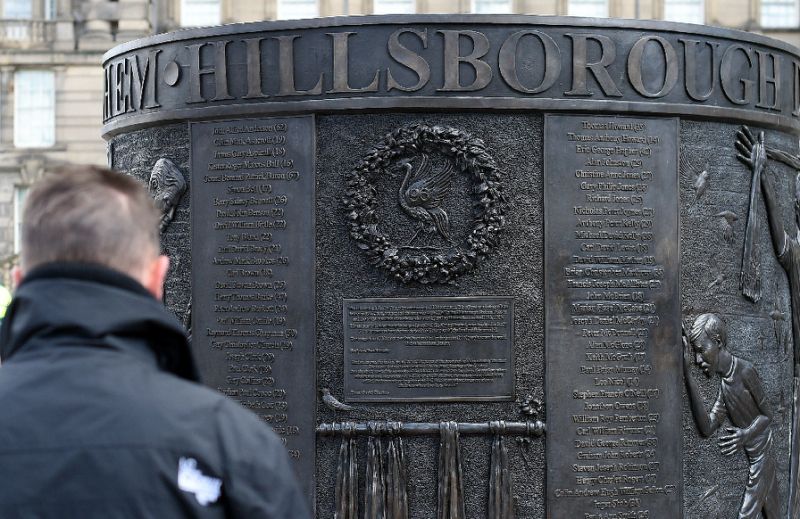Six people, including four former senior policemen, were charged on Wednesday with criminal offenses over the 1989 Hillsborough stadium disaster in England that killed 96 Liverpool football fans in the country’s worst sporting disaster.
“I have decided that there is sufficient evidence to charge six individuals with criminal offenses,” said Sue Hemming from the Crown Prosecution Service.
Former South Yorkshire Police officer David Duckenfield, who was the match commander on the day of the crush, was charged with “manslaughter by gross negligence.”
“We will allege that David Duckenfield’s failures to discharge his personal responsibility were extraordinarily bad and contributed substantially to the deaths of each of those 96 people who so tragically and unnecessarily lost their lives,” said the CPS.
Duckenfield was not charged over the death of the 96th casualty, who died four years after the disaster, because of legal time limits that were in force at the time.
Former officer Norman Bettison was charged with four offenses of misconduct in public office relating to “telling alleged lies about his involvement in the aftermath of Hillsborough and the culpability of fans.”
“Given his role as a senior police officer, we will ask the jury to find that this was misconduct of such a degree as to amount to an abuse of the public’s trust in the office holder.”
Other officers Donald Denton and Alan Foster, along with SYP solicitor Peter Metcalf, were charged with intending “to pervert the course of public justice” by allegedly attempting to cover-up the police’s culpability in the crush at the FA Cup semi-final.
Graham Mackrell, former secretary at Sheffield Wednesday Football Club, whose Hillsborough ground hosted the match, faces three charges over safety failings at the stadium.
The defendants, other than Duckenfield, will appear at Warrington Magistrates’ Court on August 9 for a first hearing in their prosecution.
The tragedy at the Hillsborough stadium in Sheffield unfolded when more than 2,000 Liverpool football fans flooded into a standing-room section behind a goal, with the 54,000-capacity stadium already nearly full for the match against Nottingham Forest. The victims were smashed against metal anti-riot fences or trampled underfoot. Many suffocated in the crush.
Police at first blamed the tragedy on drunken fans, an explanation that was always rejected by the families of the victims and the wider Liverpool community. Relatives campaigned for justice for the 96 for decades.
Relatives of the victims, who were told of the decision to bring charges in private shortly before it was made public, were seen embracing outside the building where they were briefed in Warrington, northern England. One man pumped his fist.
The Hillsborough disaster prompted a sweeping modernization of stadiums across England. Top division stadiums were largely transformed into safer, all-seat venues, with fences around fields torn down.
“All we want is accountability, nothing more and nothing less,” said Margaret Aspinall, whose 18-year-old son, James, died in the disaster.
